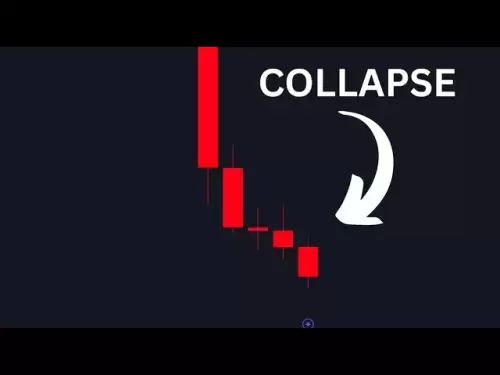-
 Bitcoin
Bitcoin $113000
-1.26% -
 Ethereum
Ethereum $3435
-3.79% -
 XRP
XRP $2.836
-5.53% -
 Tether USDt
Tether USDt $0.9997
0.00% -
 BNB
BNB $746.1
-1.80% -
 Solana
Solana $160.4
-3.48% -
 USDC
USDC $0.9997
0.00% -
 TRON
TRON $0.3206
-1.47% -
 Dogecoin
Dogecoin $0.1936
-6.02% -
 Cardano
Cardano $0.6980
-3.36% -
 Hyperliquid
Hyperliquid $37.28
-2.82% -
 Sui
Sui $3.340
-5.59% -
 Stellar
Stellar $0.3695
-5.87% -
 Chainlink
Chainlink $15.70
-3.74% -
 Bitcoin Cash
Bitcoin Cash $529.2
-2.94% -
 Hedera
Hedera $0.2304
-6.83% -
 Avalanche
Avalanche $21.00
-3.13% -
 Toncoin
Toncoin $3.620
0.53% -
 Ethena USDe
Ethena USDe $1.000
-0.01% -
 UNUS SED LEO
UNUS SED LEO $8.959
0.11% -
 Litecoin
Litecoin $105.0
-0.05% -
 Shiba Inu
Shiba Inu $0.00001185
-2.58% -
 Polkadot
Polkadot $3.495
-2.45% -
 Uniswap
Uniswap $8.808
-2.07% -
 Monero
Monero $292.9
-2.80% -
 Dai
Dai $0.9998
-0.01% -
 Bitget Token
Bitget Token $4.258
-1.43% -
 Pepe
Pepe $0.00001006
-4.02% -
 Cronos
Cronos $0.1273
-5.20% -
 Aave
Aave $250.1
-2.39%
How does a P2P network on a blockchain work?
Blockchain's P2P network uses consensus mechanisms (like PoW/PoS) to validate & add transactions to a shared, immutable ledger, enhancing security & transparency, but faces scalability challenges with high transaction volumes.
Mar 25, 2025 at 04:07 am
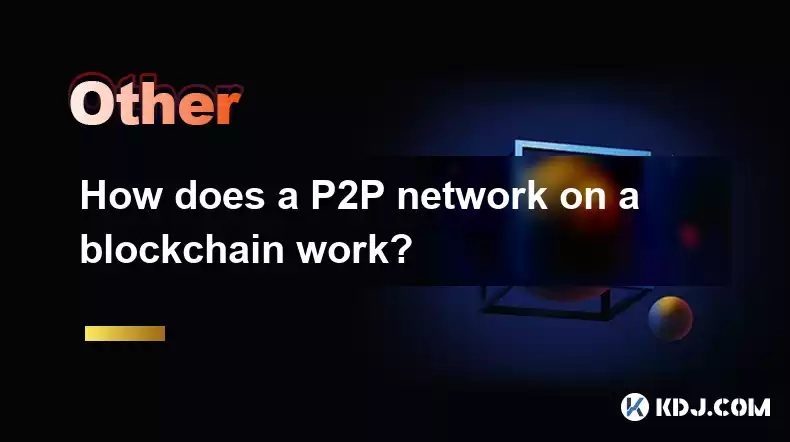
Key Points:
- Decentralized nature: P2P networks in blockchain eliminate intermediaries.
- Consensus mechanisms: Secure transactions through cryptographic hashing and consensus algorithms like Proof-of-Work or Proof-of-Stake.
- Transaction validation: Peers validate transactions independently before adding them to the blockchain.
- Data immutability: Once a transaction is added, it's permanently recorded and cannot be altered.
- Scalability challenges: Handling a large number of transactions efficiently is a key challenge.
How Does a P2P Network on a Blockchain Work?
A blockchain's core functionality relies on a peer-to-peer (P2P) network. Unlike traditional systems with central servers, a blockchain distributes the ledger across numerous nodes. This decentralized architecture enhances security and transparency. Each node maintains a complete copy of the blockchain, creating redundancy and resilience against single points of failure.
The process begins with a transaction request. For example, Alice wants to send Bitcoin to Bob. Alice broadcasts this transaction request to the P2P network. This request contains details like the amount, sender's address, and receiver's address, all cryptographically secured.
The network's nodes then independently verify the transaction. This involves checking if Alice possesses sufficient funds and if the transaction is valid according to the blockchain's rules. This verification process is crucial for maintaining the integrity of the blockchain. Nodes utilize cryptographic hashing algorithms to ensure data integrity and prevent tampering.
Once a sufficient number of nodes validate the transaction, it is grouped with other validated transactions into a "block." The process of adding a block to the chain depends on the blockchain's consensus mechanism. Popular mechanisms include Proof-of-Work (PoW) and Proof-of-Stake (PoS).
PoW relies on computational power to solve complex cryptographic puzzles. The first node to solve the puzzle gets to add the block to the chain and is rewarded with cryptocurrency. PoS, on the other hand, selects validators based on the amount of cryptocurrency they stake, promoting energy efficiency.
After a block is added, all participating nodes update their copy of the blockchain. This ensures consistency across the network. The immutability of the blockchain prevents any single entity from altering past transactions, providing a high degree of security and trust.
The P2P network continuously propagates new blocks and transactions across all nodes. This constant communication and validation are essential for maintaining the integrity and consistency of the distributed ledger. The decentralized nature ensures that no single point of control exists, making the system resilient to attacks and censorship.
However, the P2P network's scalability poses a significant challenge. As the number of transactions increases, the network's capacity to process them efficiently can become a bottleneck. Various solutions are being explored to improve scalability, including sharding and layer-2 solutions. These aim to distribute the processing load more effectively across the network.
Furthermore, the consensus mechanism significantly impacts the network's performance and security. The choice of mechanism depends on the specific requirements of the blockchain, balancing factors like security, speed, and energy consumption. The selection of a consensus mechanism also determines the transaction fees and speed of confirmation.
The security of the P2P network is paramount. Cryptographic techniques protect the integrity of transactions and prevent unauthorized access or modification. The distributed nature of the ledger makes it incredibly difficult for malicious actors to compromise the entire system. Any attempt to alter a transaction would require controlling a majority of the nodes, a computationally and economically infeasible task in established blockchains.
The communication protocols used within the P2P network are crucial for efficient and secure information exchange. These protocols define how nodes connect, broadcast transactions, and share information about the blockchain's state. Well-designed protocols are vital for maintaining the network's stability and performance.
The process of node synchronization is also a key aspect. New nodes joining the network must download and verify the entire blockchain history. This process can be time-consuming, but it ensures that all nodes have a consistent view of the ledger. Mechanisms to optimize this process are essential for efficient network growth and onboarding.
Maintaining the network requires continuous monitoring and maintenance. Developers constantly work to improve the efficiency, security, and scalability of the P2P network. Updates and upgrades are frequently implemented to address vulnerabilities and enhance performance.
Finally, the governance structure of the blockchain influences the P2P network's operation. Decisions about network upgrades, consensus mechanism adjustments, and other crucial aspects are often determined through community governance processes.
Frequently Asked Questions:
Q: What is the role of cryptography in a blockchain's P2P network?
A: Cryptography secures transactions, ensures data integrity, and verifies the authenticity of participants. Hashing algorithms create unique fingerprints for each block, while digital signatures verify the sender's identity and prevent tampering.
Q: How does a P2P network handle transaction conflicts?
A: Consensus mechanisms resolve conflicts. The majority of nodes decide which version of the blockchain is valid, rejecting conflicting transactions.
Q: What are the limitations of a P2P blockchain network?
A: Scalability (handling many transactions), latency (transaction confirmation times), and energy consumption (especially with PoW) are key limitations.
Q: Can a single node control a P2P blockchain network?
A: No. The decentralized nature makes it extremely difficult for a single entity to control the network; it requires controlling a majority of the nodes.
Q: How does a new node join a P2P blockchain network?
A: A new node connects to existing nodes, downloads the entire blockchain, verifies its integrity, and then participates in the network.
Disclaimer:info@kdj.com
The information provided is not trading advice. kdj.com does not assume any responsibility for any investments made based on the information provided in this article. Cryptocurrencies are highly volatile and it is highly recommended that you invest with caution after thorough research!
If you believe that the content used on this website infringes your copyright, please contact us immediately (info@kdj.com) and we will delete it promptly.
- Bitcoin, XRP, and the Price Drop Blues: What's Shakin' in Crypto?
- 2025-08-03 00:30:12
- Cold Wallet, Troncoin, and Shiba Inu: Navigating Crypto Opportunities in the Concrete Jungle
- 2025-08-03 01:51:38
- Crypto Presales: Navigating the Hype with BlockchainFX and Beyond
- 2025-08-03 01:51:39
- Bank of America, Ripple, and RLUSD: A New Era in Digital Finance?
- 2025-08-03 00:30:12
- Bitcoin Strategy: Saylor's Not Hoarding, He's Building an Empire
- 2025-08-02 22:30:12
- Bitcoin Bloodbath: Macro Pressures and Liquidations Unleash Crypto Chaos
- 2025-08-02 22:30:12
Related knowledge

What is the difference between on-chain and off-chain transactions?
Aug 02,2025 at 04:22pm
Understanding On-Chain TransactionsOn-chain transactions refer to digital asset transfers that are recorded directly on a blockchain ledger. These tra...

What is the double-spending problem and how does blockchain prevent it?
Aug 02,2025 at 01:07pm
Understanding the Double-Spending ProblemThe double-spending problem is a fundamental challenge in digital currency systems where the same digital tok...

What is the difference between a blockchain and a database?
Aug 01,2025 at 09:36pm
Understanding the Core Structure of a BlockchainA blockchain is a decentralized digital ledger that records data in a series of immutable blocks linke...
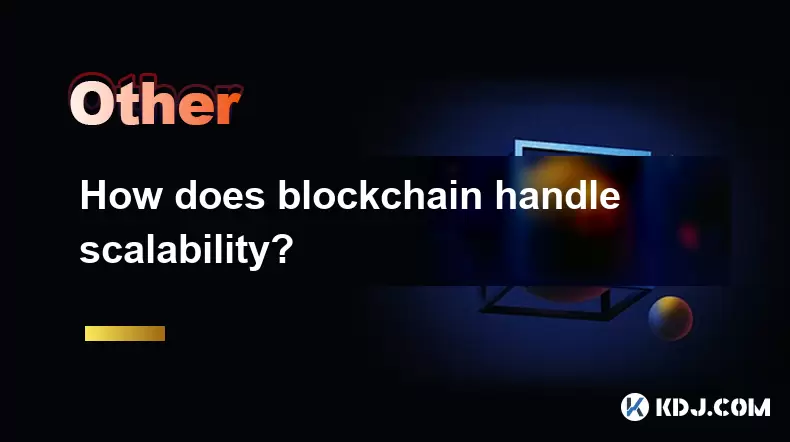
How does blockchain handle scalability?
Aug 02,2025 at 02:58pm
Understanding Blockchain Scalability ChallengesBlockchain scalability refers to a network's ability to handle an increasing volume of transactions wit...
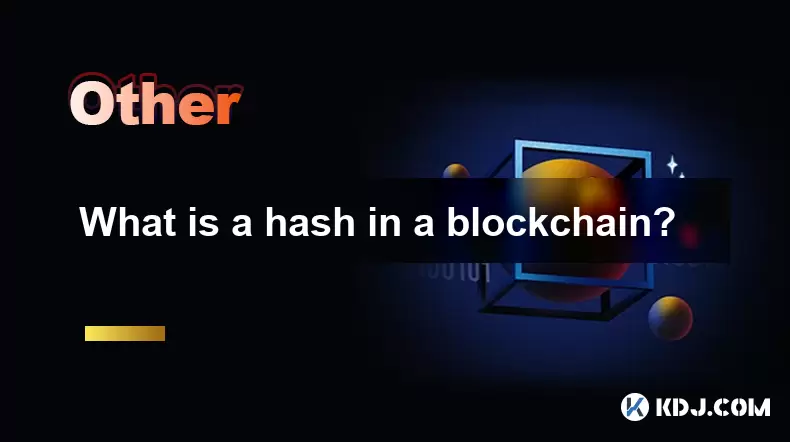
What is a hash in a blockchain?
Aug 02,2025 at 05:28am
Understanding the Concept of Hash in BlockchainA hash in the context of blockchain technology refers to a unique digital fingerprint generated by a cr...
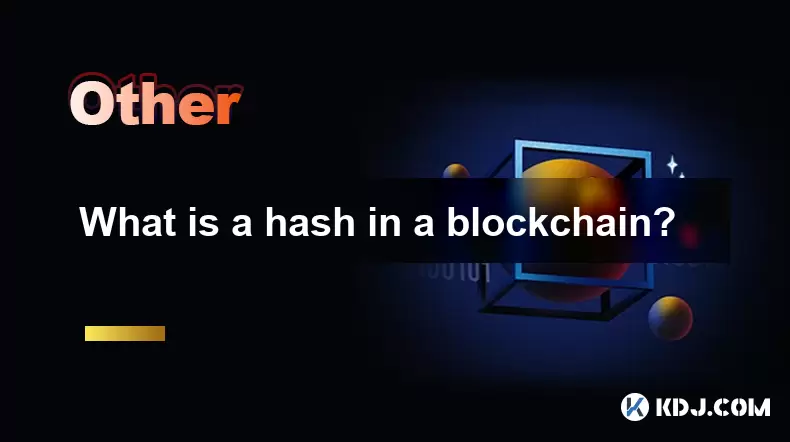
What is a hash in a blockchain?
Aug 02,2025 at 04:43am
Understanding the Concept of Hash in BlockchainA hash in the context of blockchain technology refers to a unique digital fingerprint generated by a cr...

What is the difference between on-chain and off-chain transactions?
Aug 02,2025 at 04:22pm
Understanding On-Chain TransactionsOn-chain transactions refer to digital asset transfers that are recorded directly on a blockchain ledger. These tra...

What is the double-spending problem and how does blockchain prevent it?
Aug 02,2025 at 01:07pm
Understanding the Double-Spending ProblemThe double-spending problem is a fundamental challenge in digital currency systems where the same digital tok...

What is the difference between a blockchain and a database?
Aug 01,2025 at 09:36pm
Understanding the Core Structure of a BlockchainA blockchain is a decentralized digital ledger that records data in a series of immutable blocks linke...

How does blockchain handle scalability?
Aug 02,2025 at 02:58pm
Understanding Blockchain Scalability ChallengesBlockchain scalability refers to a network's ability to handle an increasing volume of transactions wit...

What is a hash in a blockchain?
Aug 02,2025 at 05:28am
Understanding the Concept of Hash in BlockchainA hash in the context of blockchain technology refers to a unique digital fingerprint generated by a cr...

What is a hash in a blockchain?
Aug 02,2025 at 04:43am
Understanding the Concept of Hash in BlockchainA hash in the context of blockchain technology refers to a unique digital fingerprint generated by a cr...
See all articles

























